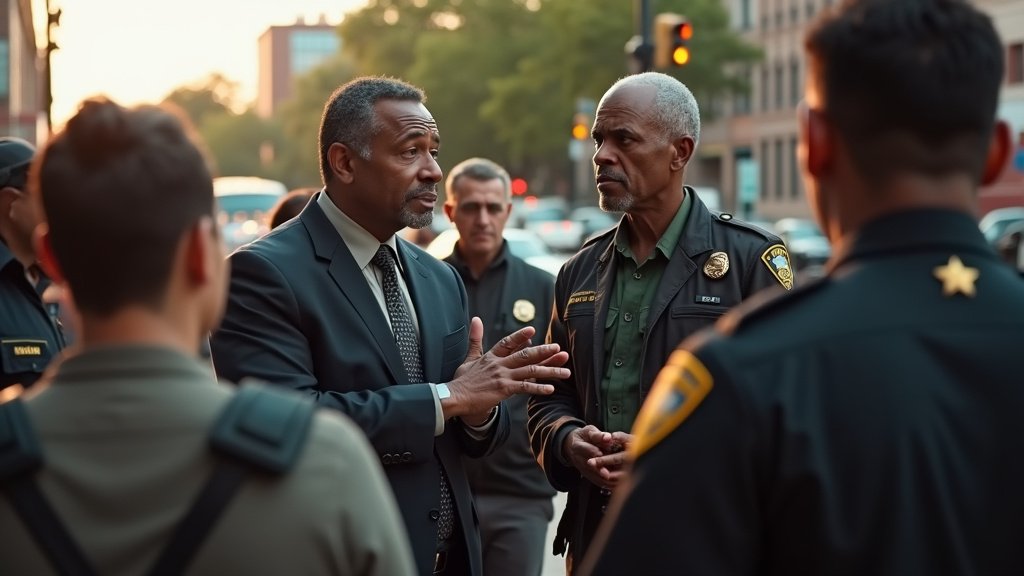CHARLOTTE, NC – A significant immigration enforcement surge, dubbed “Operation Charlotte’s Web,” has swept through Charlotte, North Carolina, over a recent weekend, resulting in dozens of arrests and prompting widespread fear and condemnation from residents and local leaders. U.S. Customs and Border Protection (CBP) commanders have touted the operation as a success, highlighting arrests of individuals with alleged criminal histories, while community advocates describe an atmosphere of overwhelm and anxiety.
Operation Charlotte’s Web Unveiled
The operation, reportedly initiated around November 15, 2025, saw hundreds of CBP agents deployed across Charlotte, the largest city in North Carolina. Gregory Bovino, a top CBP commander who previously led similar controversial operations in Chicago and Los Angeles, took to social media to announce the initiative’s results. He stated that agents had apprehended over 80 individuals during the initial phase of “Operation Charlotte’s Web,” which was characterized by the Trump administration as a targeted effort against “criminal illegal aliens.” Assistant Secretary Tricia McLaughlin of the Department of Homeland Security (DHS) affirmed that the surge aimed to “ensure Americans are safe and public safety threats are removed,” pointing to nearly 1,400 immigration detainers that had allegedly gone unhonored across North Carolina as a justification for the enforcement action.
Scope of Enforcement and Arrests
According to Commander Bovino, the 81 arrests made on the first day of the operation were primarily of individuals with “significant criminal and immigration history.” He specifically highlighted cases such as a man with alleged drunk driving convictions, stating the arrest removed a public safety risk from the streets. The DHS also pointed to specific cases, including individuals arrested for serious offenses like murder and child exploitation, whom they claim were released from local custody due to sanctuary policies that limit cooperation with federal immigration detainers. These claims were met with skepticism by some local officials, including North Carolina Governor Josh Stein, who suggested that many detainees in similar operations nationwide lacked criminal convictions and some were U.S. citizens.
Community Outcry and Fear
The presence of federal agents in neighborhoods, including encounters at churches, apartment complexes, and businesses, has generated significant fear and disruption. Residents reported instances of people being pursued by agents, and in at least one widely shared account, a U.S. citizen alleged his car window was broken and he was briefly detained. The atmosphere has been described as one of “overwhelm,” with many immigrant enclaves and business districts coming to a standstill. Some businesses, like Manolo’s Bakery, closed for the weekend to support the community and protect families from potential separation. Protests erupted throughout the weekend, with activists organizing demonstrations and distributing whistles to alert neighbors to federal agent activity. Local leaders, including Charlotte City Council member-elect JD Mazuera Arias and Mayor Vi Lyles, expressed strong objections, criticizing the surge for stoking fear and uncertainty, particularly when crime rates are reportedly trending downwards in the US.
Official Justifications and Criticisms
DHS officials have defended the operation by citing North Carolina’s “sanctuary policies” as a reason for federal intervention. These policies, which limit the extent to which local jails will honor immigration detainers, are argued by DHS to create public safety risks. However, local officials and community advocates have pushed back, asserting that the tactics employed are overly aggressive and detrimental to community trust. They argue that such operations unjustly target hardworking families and sow division, contrasting with the administration’s stated aims. The Charlotte-Mecklenburg Police Department reiterated that it does not enforce federal immigration laws and is not involved in planning these operations.
Tactics and Precedent
Concerns have also been raised about the tactics used by CBP, drawing parallels to previous federal operations in other cities where aggressive methods, including the use of chemical agents, led to lawsuits and investigations. The “Operation Charlotte’s Web” marked a notable instance where CBP led the immigration enforcement surge independently of Immigration and Customs Enforcement (ICE) in the same locale. This operational approach, coupled with the nature of the arrests and the locations targeted, has fueled broader questions about the federal government’s immigration enforcement strategies and their impact on US communities. The duration of the operation and the specific locations where detainees are being held remain unclear, adding to the community’s anxiety.
Conclusion
As “Operation Charlotte’s Web” concludes its initial phase, the tension between federal immigration enforcement goals and local community concerns remains palpable in Charlotte. The commander’s touting of arrests contrasts sharply with the fear and disruption reported by residents. This event underscores the ongoing debates surrounding immigration policy, the role of federal agencies in local communities, and the significant human impact of such enforcement surges across the US.






